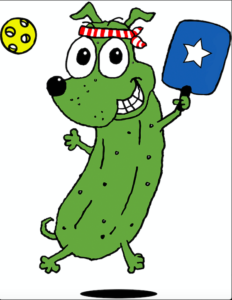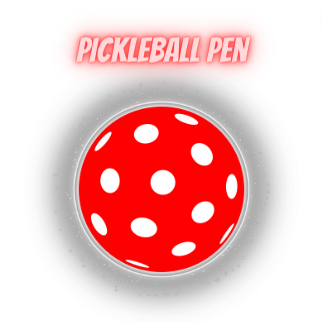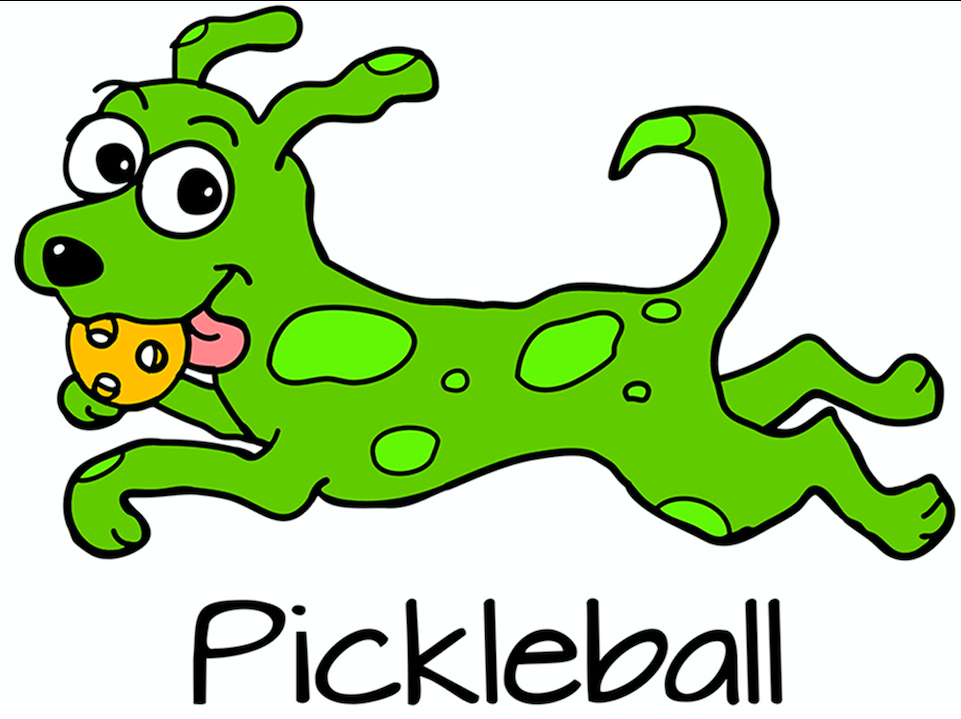One of the most interesting aspects of this unique game is its name – pickleball… Many people wonder how this fun and engaging sport came to be called pickleball in the first place, out of all the different possible names it could’ve had.
While there are a few interesting stories floating around, I’ve found one that strikes me in particular as being true. While I think that all of these stories are worth talking about, I’ll explain why I’m putting my money behind one in particular. So… why did they name it pickleball?
The Dog Story
Pickleball was invented in the summer of 1965 by Joel Pritchard, a congressman from Washington State, and his friend Bill Bell. Joel Pritchard’s family had a dog named Pickles, who would chase after the ball every time they played the game. This gave Joel and Bill the idea to create a new game that would be fun for the whole family and the dog.
Joel and Bill started playing the game in their backyard using paddles made of plywood and a whiffle ball. They created the first permanent pickleball court by lowering the badminton net and marking out the boundaries with chalk. The game was an instant hit with the family and friends, and they continued to play it regularly.
One day, a neighbor saw them playing and asked what they were playing. They replied that they were playing “pickleball”, named after their family dog Pickles, who would chase after the ball. The name stuck, and pickleball was born.
Personally, this is the one I think is most likely to be true. The surviving Pritchards are the ones who keep it going, and many of them remember that this is how the name was chosen.

The Boat Story
Another version of the story is that the name pickleball comes from a type of boat called a “pickle boat.”
In this version, Joel’s wife Joan suggested the name pickleball because the game reminded her of the pickle boat.
The term “pickle boat” is used to describe a boat made up of leftover rowers who were not chosen for other boats, and it is thought that the name reflects the fact that the game of pickleball combines elements from other sports.
This version of the story isn’t as widely accepted as the other two, but it’s still a fun and interesting story to consider.
The Table Tennis Paddles
Joel’s cute dog story isn’t the only explanation for the game’s origin. There is also another version of the story behind the name pickleball. In this version, the game was originally played with table tennis paddles. The game was played on a badminton court, and the ball used was a whiffle ball.
The story goes that Joel Pritchard and Bill Bell were playing golf one day when they came back to Joel’s house and saw their families playing a game of badminton. They decided to join in, but they couldn’t find any badminton rackets, so they used some old table tennis paddles instead.
They found that the game was more challenging and exciting to play with the smaller paddles. They then drilled holes into the paddles, making them lighter and easier to swing. They also modified the whiffle ball by making it larger and adding more holes to it, giving it a slower speed and more bounce.
The Growth of Pickleball
After its invention, pickleball quickly gained popularity, and in 1984, the USA Pickleball Association (USAPA) was founded to promote the sport and establish rules and standards for play. The organization now has over 45,000 members and hosts tournaments across the country.
Pickleball has also evolved over the years, with changes to the equipment and rules of the game. For example, the original wooden paddles have been replaced with lighter and more durable materials like graphite.
The Evolution of Pickleball
Pickleball started gaining popularity in the Pacific Northwest region of the United States in the 1970s. It was primarily played by older people looking for a low-impact sport that would keep them active and fit.
It’s also easy to learn, making it a great way for beginners to play pickleball.
Over the years, pickleball has grown in popularity and become a global sport. It’s played in schools, community centers, and even retirement homes. It’s gained a reputation for being an inclusive and social sport, attracting people of all ages and backgrounds.
Pickleball has become a staple in many sports and fitness centers around the world. The South Center Athletic Club in Tukwila, Washington, was one of the first places to offer pickleball on a regular basis in the early 1970s. The club’s owners, Barney McCallum and Bill Bell who founded the game with Joel saw the potential for it to become a popular sport.
They helped spread the word about pickleball by organizing tournaments and teaching others to play. Today, many sports and fitness centers offer pickleball courts and equipment, and the sport has become a popular choice for people looking for a fun and low-impact way to stay active.
Basic Rules of Pickleball
Now that we know how the fun sport got its name, let’s look at a few basic rules.
Court
The pickleball court is 20 feet wide and 44 feet long, with a centerline dividing it into two halves. There are two service areas on each side of the court, and the non-volley zone (also known as the kitchen) is the area within 7 feet of the net on both sides.
Scoring
Pickleball is played to 11 points, and the team that wins the rally scores a point. The winning team must win by two points. In a tournament, matches may be played to 15 or 21 points.
Serve
The serve must be underhand and made diagonally across the court. The server must keep both feet behind the baseline and inside the service area. The serve must clear the net and land in the opposite service court.
If the ball hits the net and lands in the correct service court, it’s a “let serve”, and the serve is replayed. Each player on a team takes turns serving, and the server must alternate between the right and left sides of the court.
Who serves first? The team that wins the coin toss or a game of rock-paper-scissors serves first in the first game of the match. In subsequent games, the team that served first in the previous game receives the serve.
Return
After the serve, the receiving team must hit the ball back over the net and into the opposite court. The ball must clear the net and land within the opposite court without touching the net or any lines. If the returning team hits the ball out of bounds or into the net, the serving team earns a point.
Volley
After the ball bounces once, players can either volley the ball out of the air or play it off the bounce. A volley is a shot where the ball is hit before it bounces on the court. However, volleys aren’t allowed within the non-volley zone.
Double Bounce Rule
After the serve and return, both teams must let the ball bounce once before playing it. This means that the receiving team must let the serve bounce once before returning it, and the serving team must let the return bounce once before hitting their third shot.
After both teams have hit their third shot, the ball can be volleyed (hit in the air) or allowed to bounce once before being hit.
Non-Volley Zone
Players cannot enter the non-volley zone to hit a volley, except when the ball has bounced in the non-volley zone, and they must hit the ball from outside of the non-volley zone. Players can enter the non-volley zone at any other time.
Faults
A fault is committed if the ball is hit out of bounds, hits the net on the serve or return, or is volleyed before it bounces once on each side of the court. It’s also a fault if a player steps into the non-volley zone and hits the ball on the fly, or if a player hits the ball out of the air while standing inside the non-volley zone.
Conclusion
Most likely, pickleball got its name from a dog, but it has become much more than just a fun game played in a backyard.
The sport has evolved and grown in popularity, with organizations like the USAPA and IPF working to promote and develop it on a national and global level. Pickleball has become a favorite pastime for people of all ages and skill levels, providing a fun and low-impact way to stay active and socialize with others.
The future of pickleball looks bright, with the sport gaining recognition and support from major organizations and a growing number of players. As more people discover the joys of pickleball, it’s likely that the sport will continue to evolve and grow in popularity. We can expect to see more tournaments, more players, and more exciting moments on the court in the years to come.

